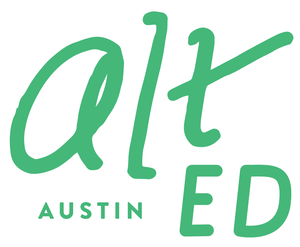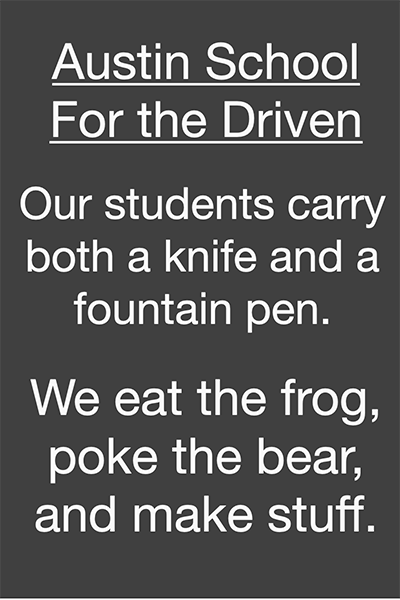Finding the river within
/
We are delighted to welcome Sensei Jonathan Hewitt to share some of his deep wisdom with Alt Ed Austin readers. He is the founder of Life Ki-do Martial Arts, one of Austin’s most beloved, effective, and elevating enrichment programs.
Go with the flow. A profound way to live, but sometimes that’s easier said than done—and what exactly does it mean anyway?! Growing up, I powered through life. My goal was to be the best, the fastest, and the most popular. I was in control, and I was going to make it all happen. But wait— was I really in control? And even when I won the gold medals and got the approval, why did I feel so empty inside?
I realized at a pretty young age that I needed to look inside rather than outside for peace, fulfillment, and happiness. I spent many years searching for answers studying martial arts, psychology, mindfulness, and meditation. What I’ve come to is a place I call the River.
One of the reasons I like this word is that I work with children, and it’s an easy concept for kids to understand and relate to. But it also describes perfectly a beautiful way to live: rivers are always flowing and always moving toward something greater. Inevitably there will be obstacles in its way, but the River moves around those obstacles and never gets stuck. To me, the River is about putting your heart into life and giving it your all.
What it doesn’t mean is being perfect. I call the River’s two opposites Ice and Puddle. Being like Ice is trying too hard, feeling pressured and stressed. Being like a Puddle is not trying enough, feeling lazy, bored, and disinterested. The thing is that we are all like Ice and Puddle sometimes. It’s part of being a human being. The important thing is to not get stuck in judging ourselves and instead keep returning to the River over and over. It’s a fluid state, remember? Not a fixed, end-all state of perfection.
Finding the River has not only transformed my life but also transformed the way I teach martial arts. I grew up in and taught for many years a rigid, traditional type of martial arts. The techniques were based on a set of preset circumstances—he does this move, so you follow with that move.
But life never happens that way, right? So why not practice martial arts in a way that reflects how we want to live life: dealing with spontaneous situations in a fluid manner? We practice how to take an opposing force and use it to redirect the flow. In martial arts, this might be a physical force, but in life it can be any circumstance or even (and most commonly!) our own inner emotions and thoughts.
The amazing thing is that when you are in the River, your experience with a partner becomes about connection, care, and cooperation rather than about comparisons, competition, and control. These are deep foundations for how to be in relationships with others in the world. Instead of seeing another human being as someone to fight with, or compete with, or compare yourself to, being in the River allows you to feel empathy and compassion for that individual. In our dojo, everyone supports each other to be their very best. Being not like Ice or Puddle allows you to be present and sensitive to your partner’s needs while also communicating honestly and clearly your own needs.
While there are many tools to stay in the River, the most effective by far is the breath, and we practice it all the time. With the kids, we call it Ninja Breathing to imbue the breathing with a sense of empowerment. Harnessing the power of the breath allows us to be relaxed, focused, calm, and present. Ready to see challenges as opportunities to grow rather than as obstacles that are impossible to overcome. Ready to let it come, let it go, let it flow. Like a River.
Jonathan Hewitt























